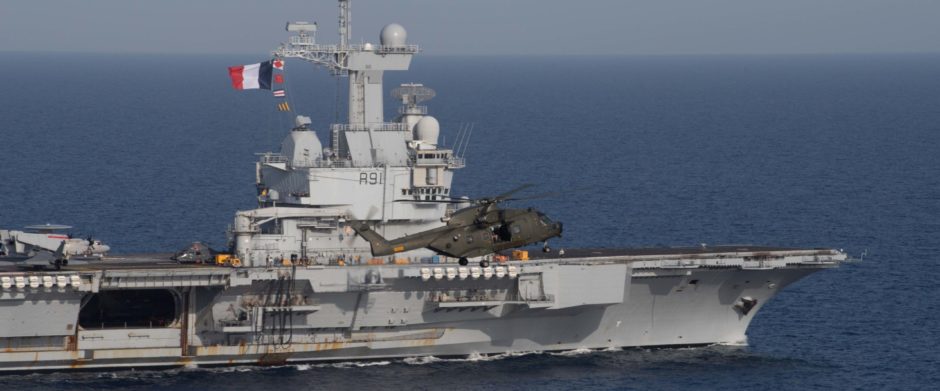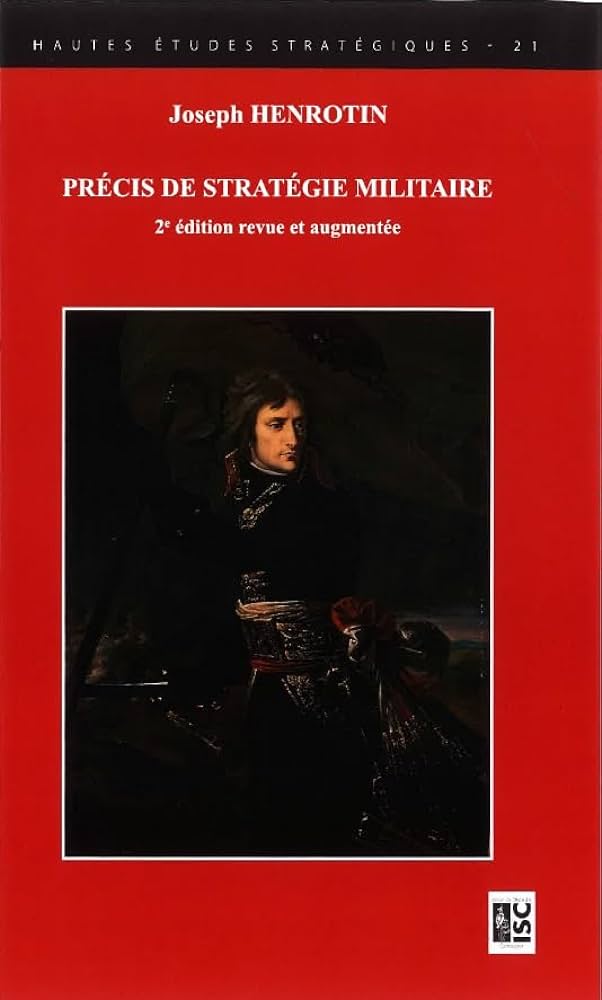In the nineteenth century, the Mediterranean Sea is a united theatre of operation. This unification is permitted by two factors, such as in the XVIIth century : a technical one, the progressive introduction of steamship43, which allows long cruises all around the year ; a political one, with the decay of Ottoman Empire : the Eastern part of the Mediterranean basin is no longer closed to the Christians, who are now able to launch major expeditions against Egypt (1801), in Greece (1827) and in the Black Sea (1855-1856).
Other difference with the XVIIIth there is no great war at sea in the Mediterranean between 1815 and 1914. The only notable naval events are the destruction of the Turkish fleet by a combined British-French-Russian fleet at Navarino (1827), an episode of gunboat diplomacy which degenerates in battle44 and the battle of Lissa (1866) between Austrian and Italian fleets which is not a great affair by the number of the ships involved, no by its strategical effects but has a great tactical impact by the weapon used (the ram). By contrast, throughout the century, these is an intensive use of naval diplomacy, these is an intensive use of naval diplomacy, linked to the Eastern Question45. The survival of the Ottoman Empire until 1914 will be due more to the diplomatic game between the great powers, and to the will of the hegemonic one more than to its own forces.
British hegemony : diplomacy and strategy
After 1815, British sea control has become hegemonic. The global superiority of Great Britain is undisputed and she is reinforced by local superiority. There is a Mediterranean squadron which is based on Malta and which may receive fairly quickly reinforcements from the home fleet. Nevertheless, it would be erroneous to see this period as one of quiet hegemony with a naval instrument so strong that Great Britain no longer needs to use diplomatic alliances. The diplomatic game of the XVIIIth century will be pursued but with less difficulties thanks to the naval and economic superiority. These alliances will perform remarkably well throughout the century.
The first potential ennemy is France. After the Vienna treaty, French naval power is destroyed and will never recover. But during the Monarchie de Juillet (1830-1848), King Louis-Philippe begins a policy of naval restoration46 and colonial expansion. The axis of his Mediterranean policy is the support of the Pasha of Egypt Mehemet Ali. Lord Palmerston has a nightmare : that Mehemet succeeds in creating « an Independent state consisting of Syria, Egypt and Arabia. Once this was accomplished, then Tunis and Tripoli would be pressed into the same system and France (which occupied Algiers in 1830) would become practically mistress of the Mediterranean » 47. It is to prevent this possibility that British diplomacy organizes a coalition with Russia (tsar Nicholas Ier dislikes Louis-Philippe), Prussia and Austria. On the verge of war, Louis-Philippe refuses the perspective of war and retreats (1840).
This crisis is a good example of the British power which is sufficient to deter French government to push ahead his ambitions, and of British diplomatic skilfulness, with the alliance of Russia which is already in competition with England on the Eastern Question. But it shows also the limitations of peacetime British naval power. The Turkish Sultan asked for British naval assistance against Mehemet Ali as soon as 1831, but England was very slow to answer. It was not until 1839 that the Mediterranean fleet was seriously reinforced and this delay was beneficial for Russia which succeeded in obtaining paramount influence over the Porte by the treaty of Unkiar Skelessi (1833). This failure was not due to incompetence or blindness but simply to the weakness of the Royal Navy : » With only 14 line-of-battle ships in commission and 2 others international crisis brewing – Portugal and Holland were the critical areas – Britain was physically incapable of responding at once to the Sultan’s appeal « 48. Franco-Egyptian fleet outclassed the Mediterranean fleet, but Louis-Philippe understood well that this local superiority would be only temporary and that France would be finally defeated if Great Britain did put in action her global power.
What is truly remarkable in the British conduct is that after succeeding in obtaining the support of Russia against France, she succeeds 15 years later in obtaining French support against Russia. The Crimean War breaks the Russian movement in direction of the Mediterranean and the Near East for 2 decades. It is only after having denounced the limitation clause of the Paris treaty after the French defeat against Germany (1871) that Russia tries to start again her diplomatic progression in the Balkans but the initial success is cancelled by the coalition of Germany and Britain which nullifies the San Stefano treaty (1878). Like in the XVIIIth century, we see that seapower is part of global power and that strategy is part of policy alongside with diplomacy. During the XIXth century, Britain has the most powerful naval instrument but it has also the most skilful and coherent diplomacy.
France and Great Britain in the end of the nineteenth century : two geopolitical conceptions
The last part of the XIXth century will see a strategic revolution with the opening of the Suez canal. The impact of this event is enormous. Mediterranean ceases to be a landlocked sea to become the vital link with the vital part of the British empire, the Indian ocean. Consequently, British will try to keep the control of the canal and they will succeed in 1881-1882 thanks to an incredible blunder of French diplomacy49. Great Britain maintains the economic profits of the canal to the French owned Compagnie universelle du Canal de Suez, but she has the strategic control of the canal and she reinforces her network by taking Cyprus in 1879 which will be a compensation for the Ionian Islands abandonned in the preceding decade (in fact, Cyprus will be as deceiving as were the Ionian Islands ; it has not a good harbour and it will be of doubtful utility50). The Prime minister Disraeli says at the Parliament : » When we take Cyprus, we don’t make a Mediterranean act but really an Indian act « 51. The English view is an « external » and horizontal one : Mediterranean is a maritime route marked out by Gibraltar, Malta, Cyprus, Alexandria (and beyond Mediterranean Aden) to the Indian Ocean.
On the other side, the French view is an « internal » and vertical one. French Mediterranean is limited to the Western basin, to the route between Toulon and Algiers, after 1881 between Toulon and Bizerta which must become a great naval base at the turning point of the two parts of the Mediterranean (but the harbour is poor and too vulnerable). Appears then a strategical triangle which will become a reality only in the 1930’s with the building of Mers el-Kébir. But this geographical base is not sufficient to give seapower to France due to the lack of an effective navy. The Second Empire (1852-1870) made a great effort to build a strong and modern fleet52, but all this was destroyed by the defeat against Prussia (1871) and then by the technical and doctrinal disorder which prevails with the Jeune École during the two last decades of the century53.
The new Mediterranean Game
But, in the end of the nineteenth century, the time of Anglo-French rivalry and Anglo-Russian rivalry is coming to an end. There are two political transformations which creates a new balance of power in the region54.
The first is extra-Mediterranean. The new threat is coming from Germany, land power which wants to become a seapower55. Even if they have difficulties to understand the new game, if they have again colonial rivalries (the Fashoda incident), France and Britain are moving progressively to the Entente cordiale.
The agreements of 1904 mark the settlement of old and recurrent problems and open the way to a strategic cooperation which will be finalized by the exchange of letters between Sir Edward Grey and Ambassador Cambon on November 23th, 1912, and by the naval convention of February 10th, 1913. Similarly the Anglo-Russian rivalry in Asia is settled by the agreement of July 31th, 1907, which opens the way to a naval convention in 1914. The Royal Navy is able to concentrate her forces in the North Sea against the Germain growing naval threat. This concentration is imposed by Lord Fisher ; it allows Great Britain to keep naval superiority in metropolitan waters. But the price is the end of British hegemony in Mediterranean when dependency of the British economy towards the Mediterranean sea route has never been so high : « by 1911 the Black Sea accounted for one third of Britain’s annual food imports and when the traffic from the Suez Canal was included, nearly half of all her food supply passed through the Mediterranean »56. The Mediterranean Fleet, which was the strongest component of the Royal Navy with an average of ten first-class battleships in the first years of the century, a maximum of fourteen in 1902, declines progressively : 8 battleships in 1904, 6 in 1907 ; in the 1912 reorganization, the number of battleships in reduced to 4, based at Gibraltar, with only a cruiser squadron kept in Malta; Foreign Office protests and a compromise is found : a squadron of 4 battlecruisers will be based in Malta ; in fact, the first battlecruiser arrives only in November 1912, two others in August 1913. The Mediterranean Sea is now the domain of the French Armée navale. The concentration begun in 1907 is achieved in 1911-1912.
But the French navy is in relative decline : second naval power in 1898, she is only the fifth some years later, her ships are out classed by foreign shipbuilding. The Mediterranean concentration is a response to thise decline and to the inability to compete with the Hochseeflotte. But such is the French decay that the Armée navale is just able to balance the joint Italian and Austrian navies. The irruption of the German Mittlemeer Division (with the superb battlecruiser Goeben) introduces a new complication. Moreover, the strategic vision of the French leadership remains limited to the Western and Central Mediterranean : for the Army, the priority is the transfer of XIXth corps from North Africa to metropolitan France ; for the Navy, the obsession is the Cencentration in Malta for the decisive battle which, according to the doctrine, must occurs at the outbreak of the hostilities.
But there is also a Mediterranean transformation which is the growth of regional navies. The process it at work during the second part of the nineteenth century, at least since the Austro-Italian War which saw the victory of the Austrian’s Fleet of Admiral Tegethoff against the Italian Fleet of Admiral Persano at Lissa (1866) the united kingdom of Italy builds a navy to consolidate its status of great power and to counter balance the Austrian fleet in the Adriatic57. The Austro-Hungarians build a navy first for political reasons58.
Thus the Triple Alliance is no longer a land coalition, its naval component is growing : the naval convention signed on December 5th, 1900 was an unrealistic one and remained dormant : after the redeployment of the Royal Navy, which gives to the Italian navy the second rank among the Mediterranean navies, and the growth of Austrian navy (with the building of the Viribus-Unitis dreadnoughts) a new convention is concluded in Vienna in juin 1913. But the official cooperation is hampered by the distrust between the Italians and the Austrians. Italian policy oscillates between the Triple Alliance and attempts of rapprochement with France, made by the secret agreements of 1902 (negotiated by the French Foreign Affairs ministry, but not known by the Conseil supérieur de la Marine !)59, but permanently compromized by Italian susceptibility and by incidents (as during the Libyan War, 1911).
Austria and Italy are not alone. The last decade of the century is caracterized by the beginning of a naval arms race. Spain builds dreadnoughts and France, anxious to prevent the risk of another ennemy on her boundaries, reaches an agreement in October 1904 and July 1907 on the respective interests in Morocco. Greece and Turkey are engaged in a competition which will have a tremendous impact on the First World War : the seizure of the nearly completed dreadnought Sultan Osman by the British will prompt the arrival of German battleship Goeben at Constantinople and the entry of Turkey in war alongside with Germany.
Notes:
43 Michel Mollat, Les origines de la navigation à vapeur, Paris, Presses universitaires de France, 1980.
44 Cf. James Cable, The Political Influence of Naval Force in History, London, Macmillan, 1998, pp. 58-59.
45 John B. Hattendorf, « The Bombardment of Acre. A Case Study in the Use of Naval Force for Deterrence », in IIe Journées franco-anglaises d’histoire de la Marine, Les empires en guerre et paix 1793-1860, Vincennes, Service historique de la Marine, 1990.
46 C.I. Hamilton, Anglo-French Naval Rivalry 1830-1840, Oxford, Clarendon Press, 1990.
47 Gerald S. Graham, The Politics of Naval Supremacy, Cambridge, Cambridge University Press, 1965, p. 69.
48 Gerald S. Graham, op. cit., p. 71.
49 Pierre Guillen, L’expansion 1881-1898, Paris, Imprimerie nationale, Politique étrangère de la France, 1984.
50 Louis Durteste, « Quelques aspects de la politique britannique en Méditerranée 1815-1939 », in Christiane Villain-Gandossi, Louis Durteste & S. Busuttil, Méditerranée, mer ouverte, Malte, Fondation internationale, 1997, tome II, p. 536.
51 Quoted in H. Hummel and W. Siewert, La Méditerranée, Paris, Payot, 1939, p. 221.
52 Michèle Battesti, La marine de Napoléon III, Vincennes, Service Historique de la Marine, 1998.
53 Theodore Ropp, edited by Stephen S. Roberts, The Development of a Modern Navy. French Naval Policy 1871-1904, Annapolis, Naval Institute Press, 1987.
54 The classic work is Paul G. Halpern, The Mediterranean Naval Situation 1908-1914, Cambridge, Harward University Press, 1971.
55 Cf. François-Emmanuel Brézet, Une flotte contre l’Angleterre, Paris, Librairie de l’Inde, 1998.
56 Paul G. Halpern, op. cit., p. 1.
57 Ezio Ferrante, « La pensée navale italienne de la bataille de Lissa à la Grande Guerre », in Hervé Coutau-Bégarie (ed), L’évolution de la pensée navale III, Paris, FEDN, 1993.
58 Olivier Chaline et Nicolas Vannieuwenhuyze, « La pensée navale autrichienne (1885-1914). Première approche », in Hervé Coutau-Bégarie (ed), L’évolution de la pensée navale VI, Paris, ISC-Economica, 1997.
59 Pierre Milza, Français et Italiens à la fin du XIXe siècle, Rome-Paris, École française de Rome, 1986.





